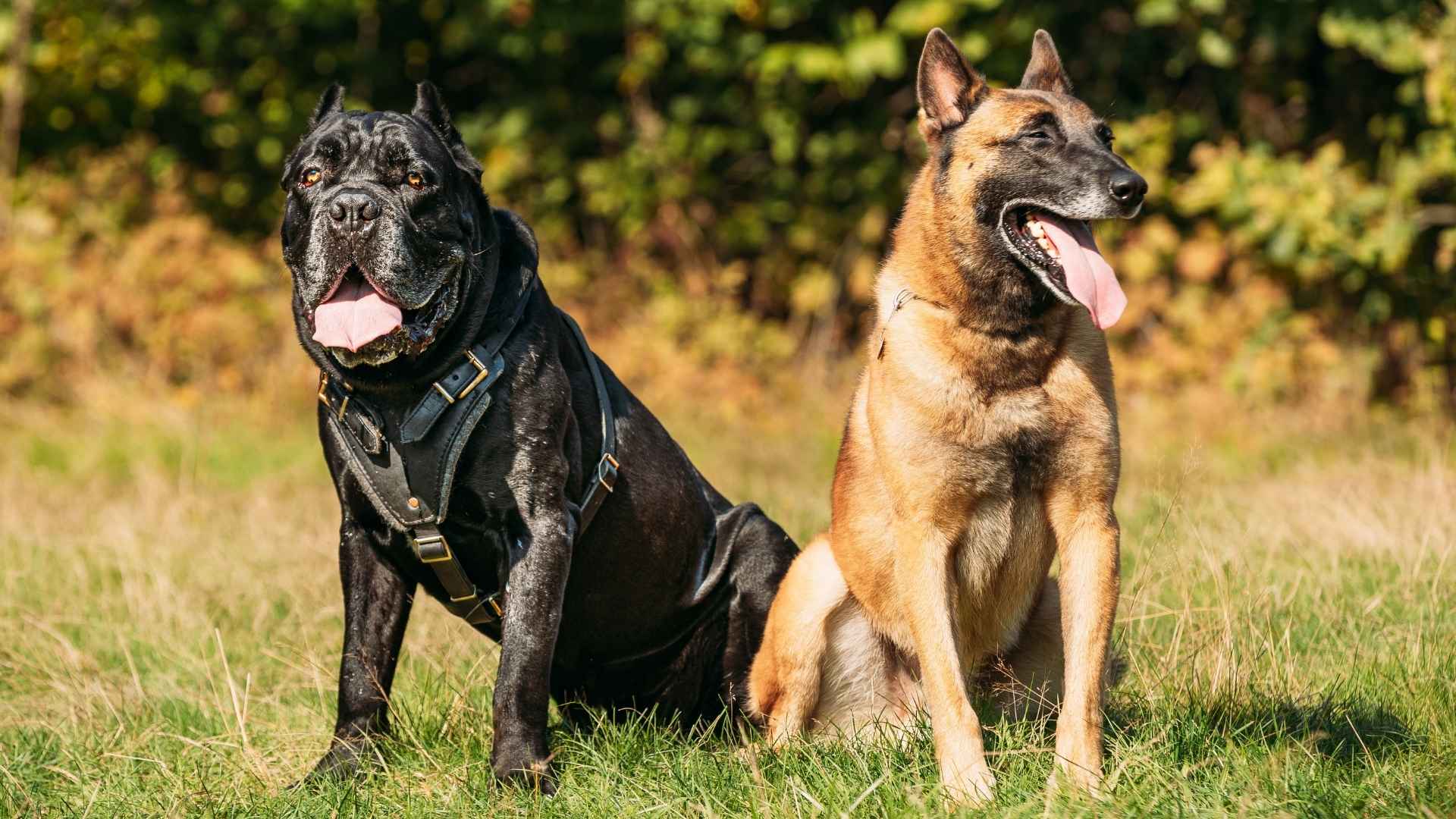A guard dog that gets along with other dogs may seem like a rare find. Many people worry that guard dogs could be too aggressive for households with multiple dogs. But what if you could have both—security and harmony? Dog owners often face challenges in balancing home protection and peaceful coexistence. You want a strong, alert protection dog, but you also want a breed that won’t stir up chaos with other pets.
Selecting the right guard dog ensures a safe, stress-free environment for everyone. Some breeds naturally combine loyalty, intelligence, and social adaptability. They don’t just defend their territory; they also respect and bond with other dogs. With proper training, these breeds can excel in both protection and companionship roles.
Did you know?
The Newfoundland, known for its gentle nature, has been nicknamed the “nanny dog” for its protective yet friendly behavior with both animals and humans.
Guard Dog Breeds that are Good with Other Dogs
1. Belgian Malinois
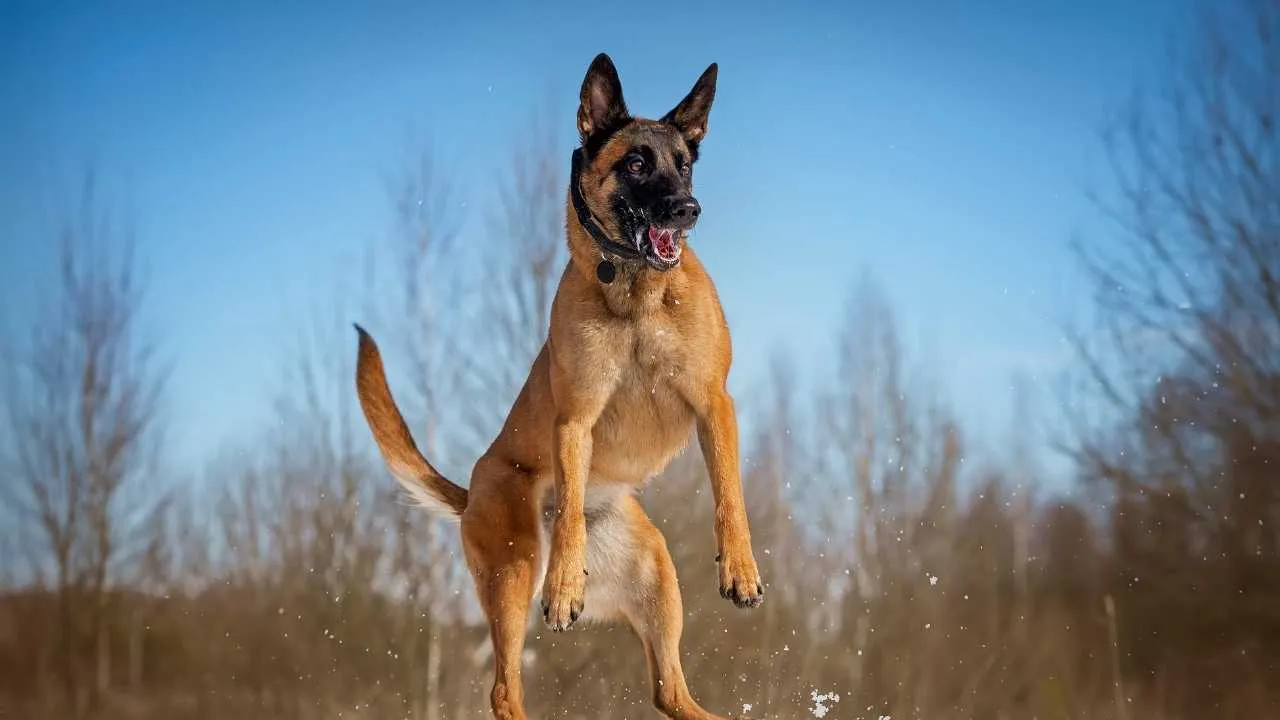
The Belgian Malinois is always ready for action, built for speed and precision. With unmatched agility, it moves like a shadow, reading situations in an instant. This breed’s sharp instincts make it an exceptional guardian that remains highly aware.
Loyalty runs deep in this breed, but socialization is key. Early exposure to different environments and dogs ensures balance. A well-trained Malinois understands the difference between friend and foe, making it a disciplined protector that can coexist with other canines.
This dog needs more than a backyard to thrive. High-intensity workouts, obstacle courses, and advanced training exercises keep the mind sharp and the body strong. Without challenges, it may develop restless energy, requiring owners to maintain a structured, engaging routine.
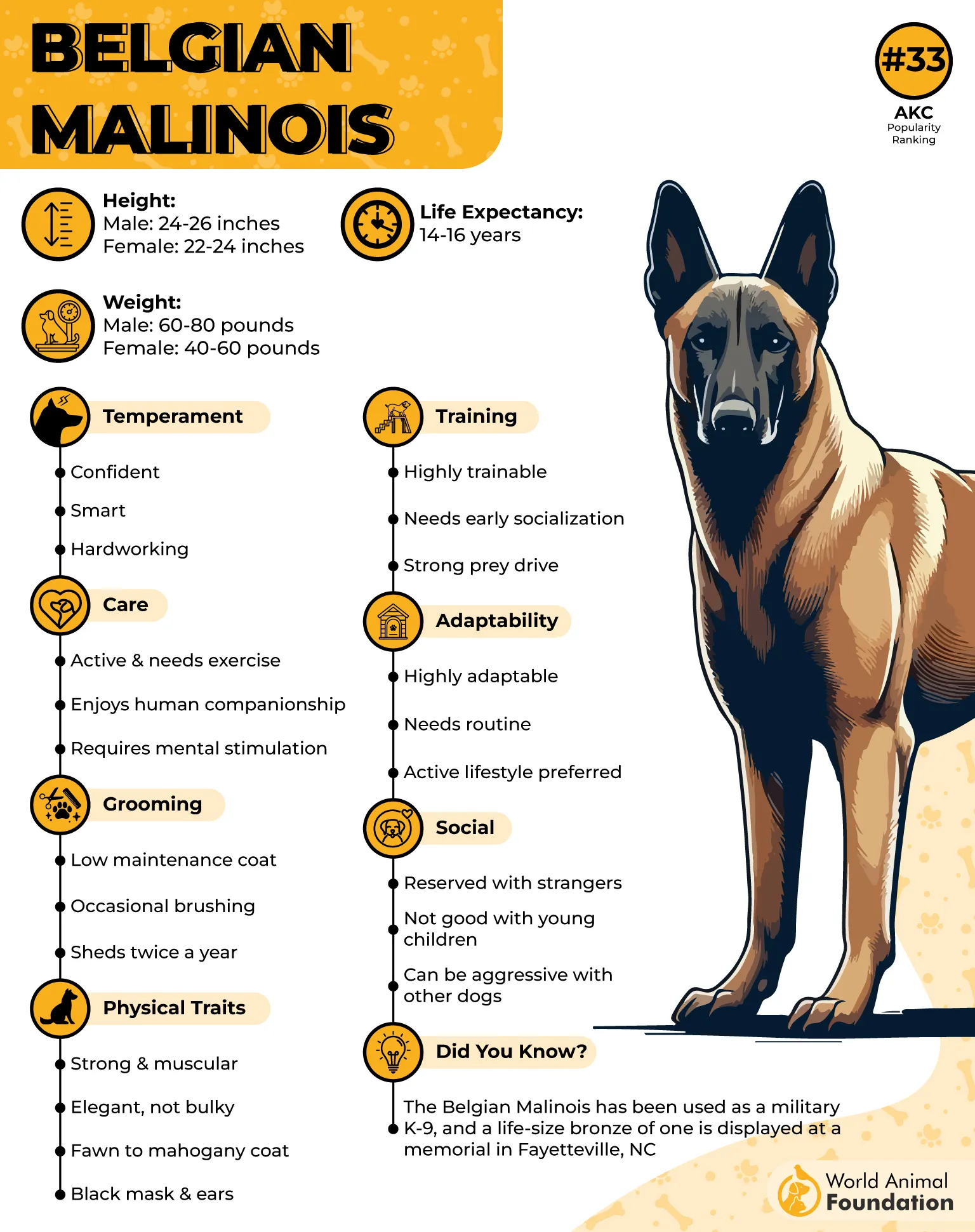
According to AKC, grooming is refreshingly simple. Its short coat repels dirt, and weekly brushing keeps shedding under control. Nail trimming and dental care round out the maintenance, making the Malinois a low-maintenance yet high-performance breed that stays ready for action.
A structured environment helps refine its instincts. With clear leadership, the Malinois remains obedient, alert, and responsive. Its disciplined nature and proper introductions allow it to integrate well with other dogs while maintaining its reputation as an elite protector.
Fun Fact
Belgian Malinois are so precise in their jumps that they can scale vertical walls over nine feet high, showcasing their remarkable strength and agility.
2. Saint Bernard
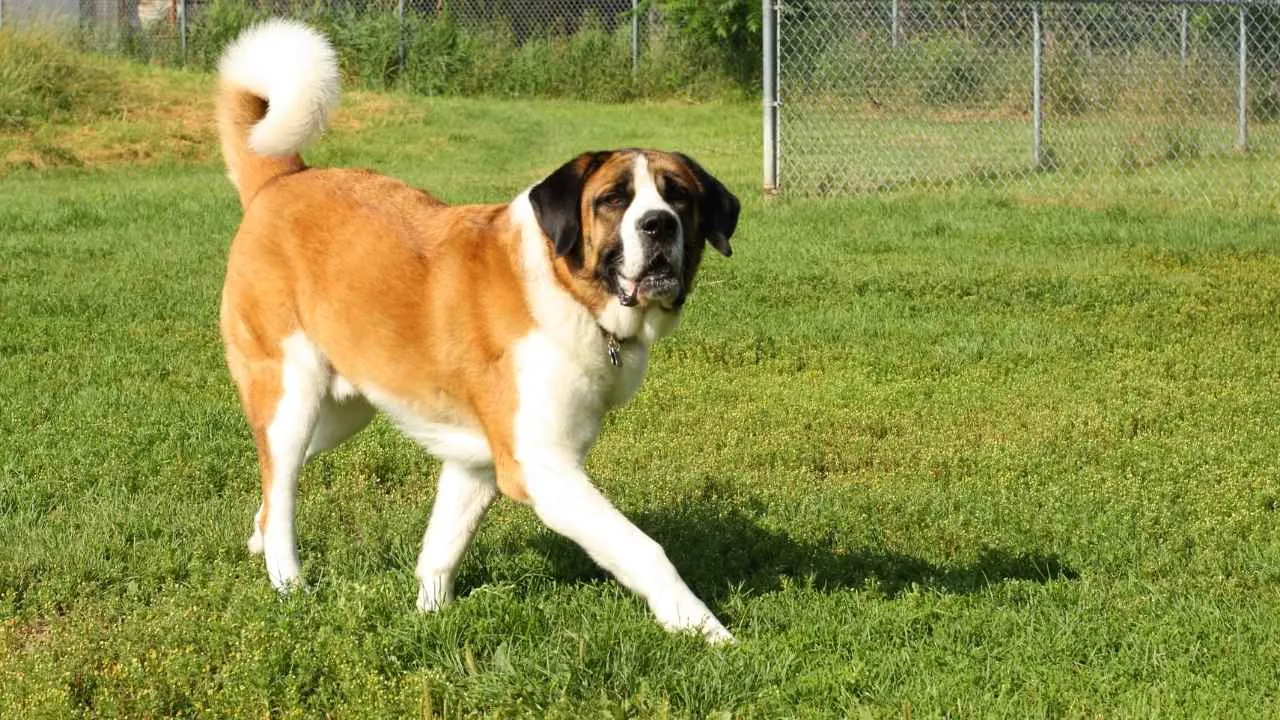
A Saint Bernard brings both size and an easygoing presence to the table. Towering yet gentle, it’s a guardian that doesn’t rely on speed but sheer presence. With patience and intelligence, it naturally understands when to protect and when to relax.
Despite its calm nature, early training is a must. This breed grows fast, and its size can be overwhelming without guidance. With proper commands and structure, a Saint Bernard becomes a reliable, controlled force that respects space and leadership.

Thick fur comes with responsibilities. Regular brushing keeps shedding in check, and occasional baths help maintain cleanliness. Drool is part of the package, requiring consistent care around the mouth. A little upkeep ensures this giant remains comfortable and well-groomed.
Energy levels stay moderate, but movement is essential. Long walks and slow-paced activities keep joints strong. This dog enjoys steady routines that keep it engaged without exhausting its massive frame, making it a manageable yet formidable presence.
This breed’s social nature makes it more accepting of other dogs. Supervised introductions and gradual bonding create a peaceful environment. With the right approach, a Saint Bernard coexists effortlessly, maintaining its calm temperament while still being a reliable protector.
Fun Fact
Saint Bernards once worked alongside monks in the Swiss Alps, saving stranded travelers buried under deep snow with their powerful sense of smell.
3. Newfoundland

The Newfoundland is a powerhouse wrapped in kindness. Originally bred for water rescues, its protective nature extends beyond just guarding. With a steady temperament and strong instincts, it serves as both a guardian and a natural lifesaver in challenging conditions.
Newfoundlands are exceptional swimmers. Webbed feet and thick coats make them masters of water-based tasks. Whether retrieving or rescuing, their ability to navigate rough waters is unmatched, making them trusted allies in lifesaving situations.
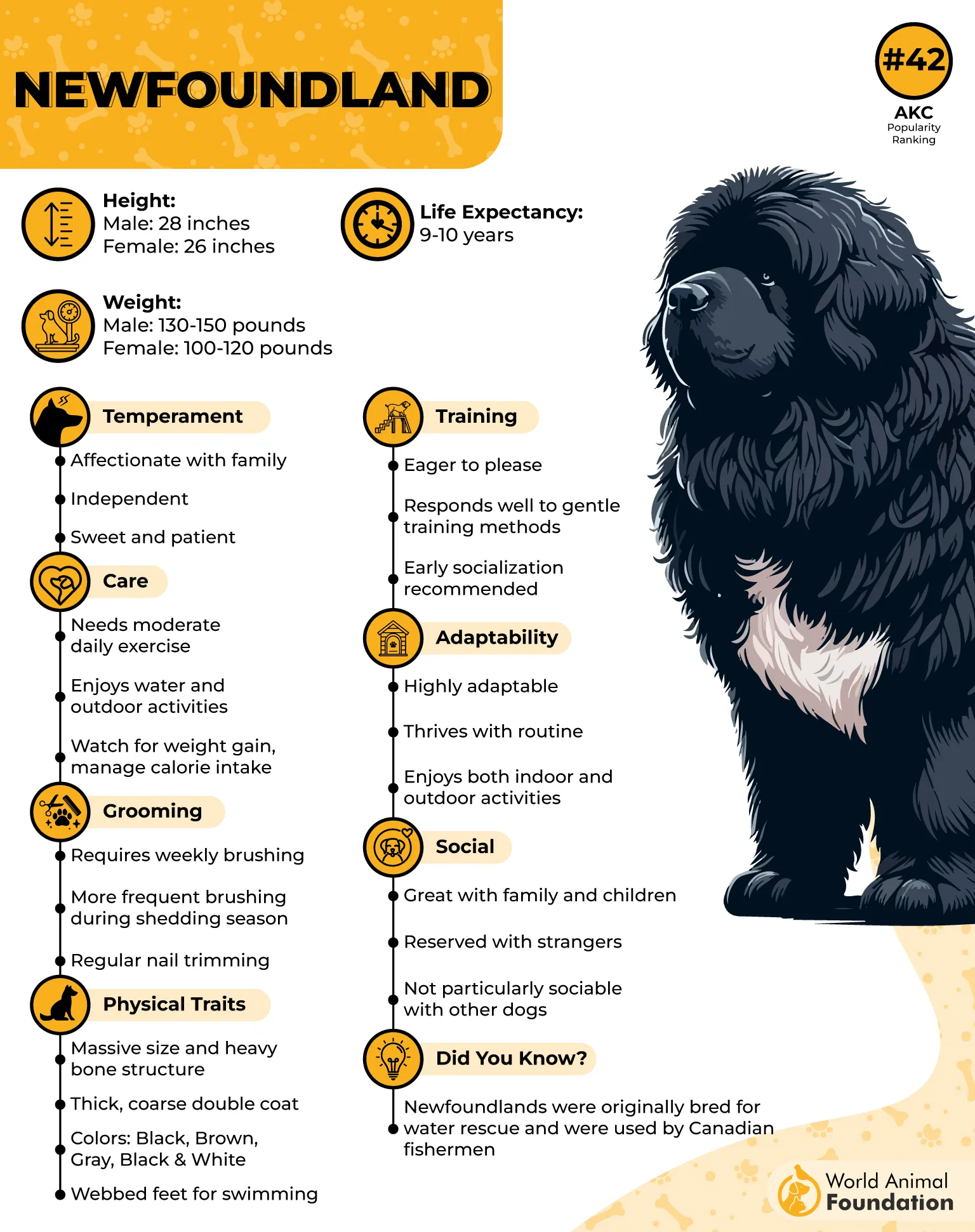
According to WebMD, their dense fur demands frequent care. Brushing multiple times a week prevents matting, especially around the thick undercoat. Seasonal shedding can be heavy, requiring extra attention. Despite the effort, maintaining their coat ensures they remain comfortable and healthy.
While large, they aren’t overly energetic. They enjoy outdoor adventures but don’t require high-intensity exercise. Swimming is their ideal activity, keeping them fit while engaging their instincts. Land-based exercise should be moderate, preserving joint health and overall well-being.
Newfoundlands have an easygoing attitude with other dogs, often acting as the calm presence in social settings. Their balanced temperament and gentle interactions make them well-suited for multi-dog households, especially when raised in a structured and positive environment.
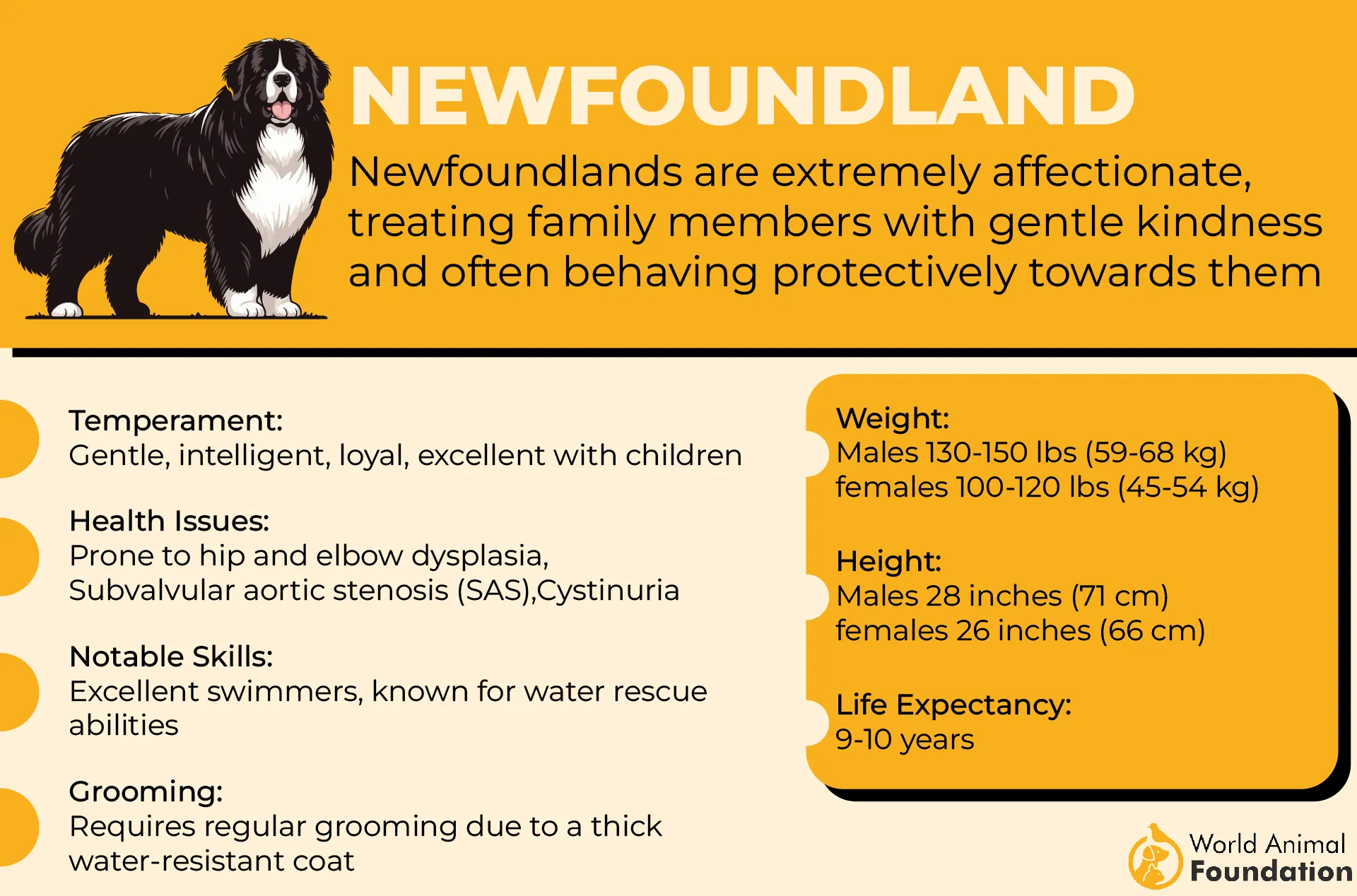
Fun Fact
Newfoundlands have been known to pull drowning people to safety without any formal training, making them one of the most naturally gifted water rescue dogs in history.
4. Bernese Mountain Dog
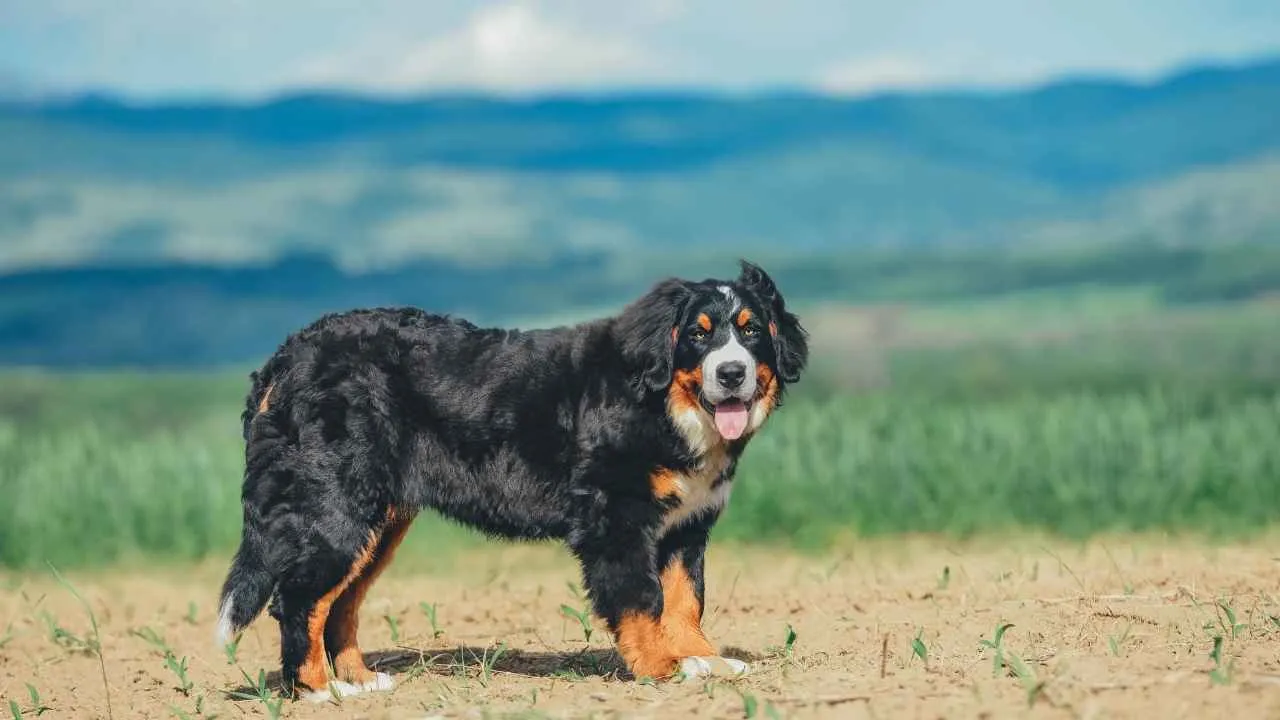
The Bernese Mountain Dog is a powerhouse with a heart of gold. This breed is not just an excellent working dog but also a natural when it comes to getting along with other dogs. Their balanced temperament makes them well-suited for multi-dog households.
Their strength and endurance trace back to their Swiss origins, where they assisted farmers in pulling carts and herding livestock. Even with their impressive size, they have an innate gentleness that prevents them from being overly dominant around other canines.
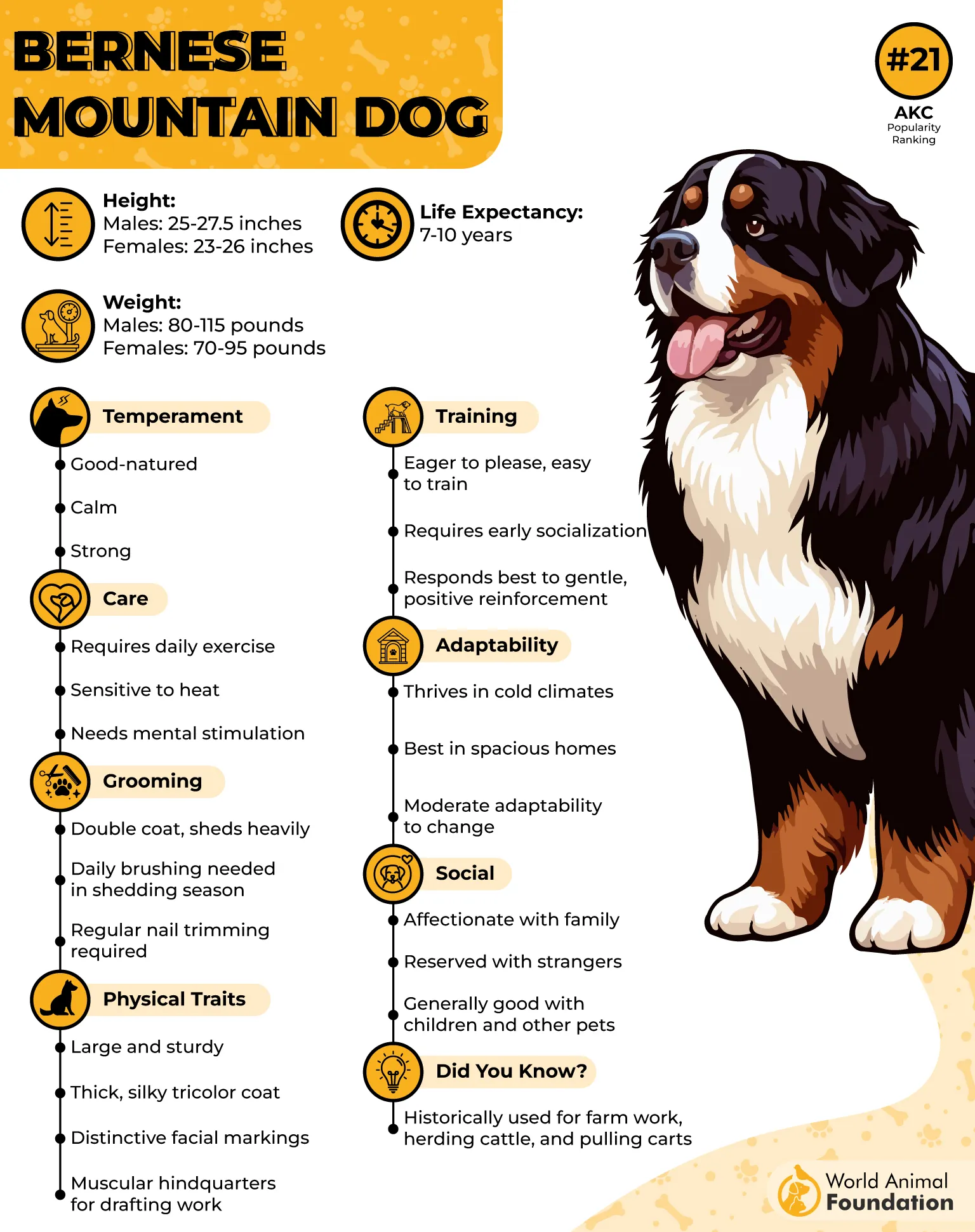
Training this breed is a rewarding experience. They are intelligent learners who respond well to consistent guidance. Positive reinforcement works wonders, reinforcing their cooperative nature with other dogs. Early socialization is key to nurturing their adaptable personality.
Grooming is a commitment due to their thick, tri-colored coat. Regular brushing keeps shedding manageable and prevents matting. Their coat, built for colder climates, requires extra care during warmer months to keep them comfortable.
Daily exercise keeps this breed content. Though they are not hyperactive, they benefit from structured activities such as hiking or cart pulling. Their sociable nature means they enjoy outings with other dogs, making them a great addition to dog-friendly environments.
Fun Fact
Despite their massive size, Bernese Mountain Dogs can be quite sensitive. They thrive on human interaction and dislike being left alone for long periods, often seeking companionship with both people and other dogs.
5. German Shepherd
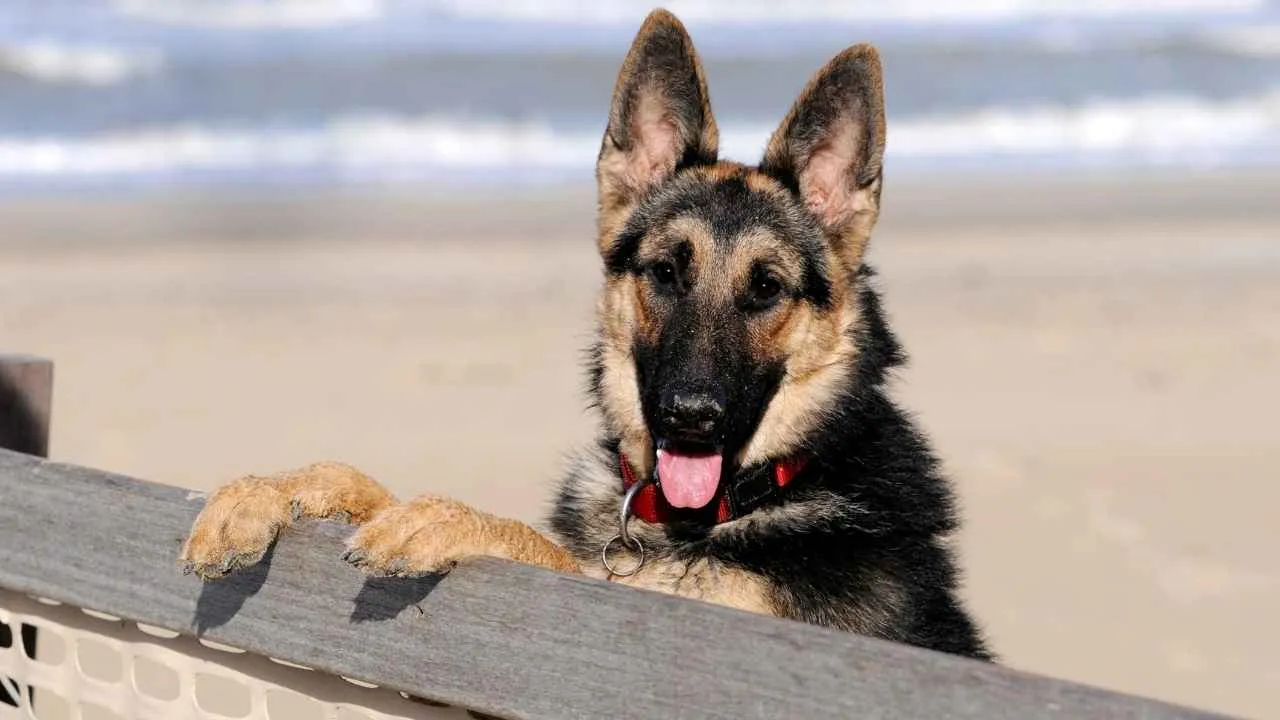
German Shepherds are known for their intelligence, loyalty, and work ethic, but they can also coexist well with other dogs when properly trained. Their confidence allows them to integrate into multi-dog environments without feeling the need to assert dominance constantly.
Bred as herding dogs, they are naturally protective, yet this instinct doesn’t translate to aggression when socialized early. Exposure to different dogs from puppyhood helps shape them into well-mannered companions who respect pack dynamics.
According to PetMD, their trainability is unmatched. German Shepherds excel in obedience and advanced training, making it easy to reinforce positive interactions with other dogs. Commands like “leave it” or “stay” can be invaluable in maintaining harmonious interactions.
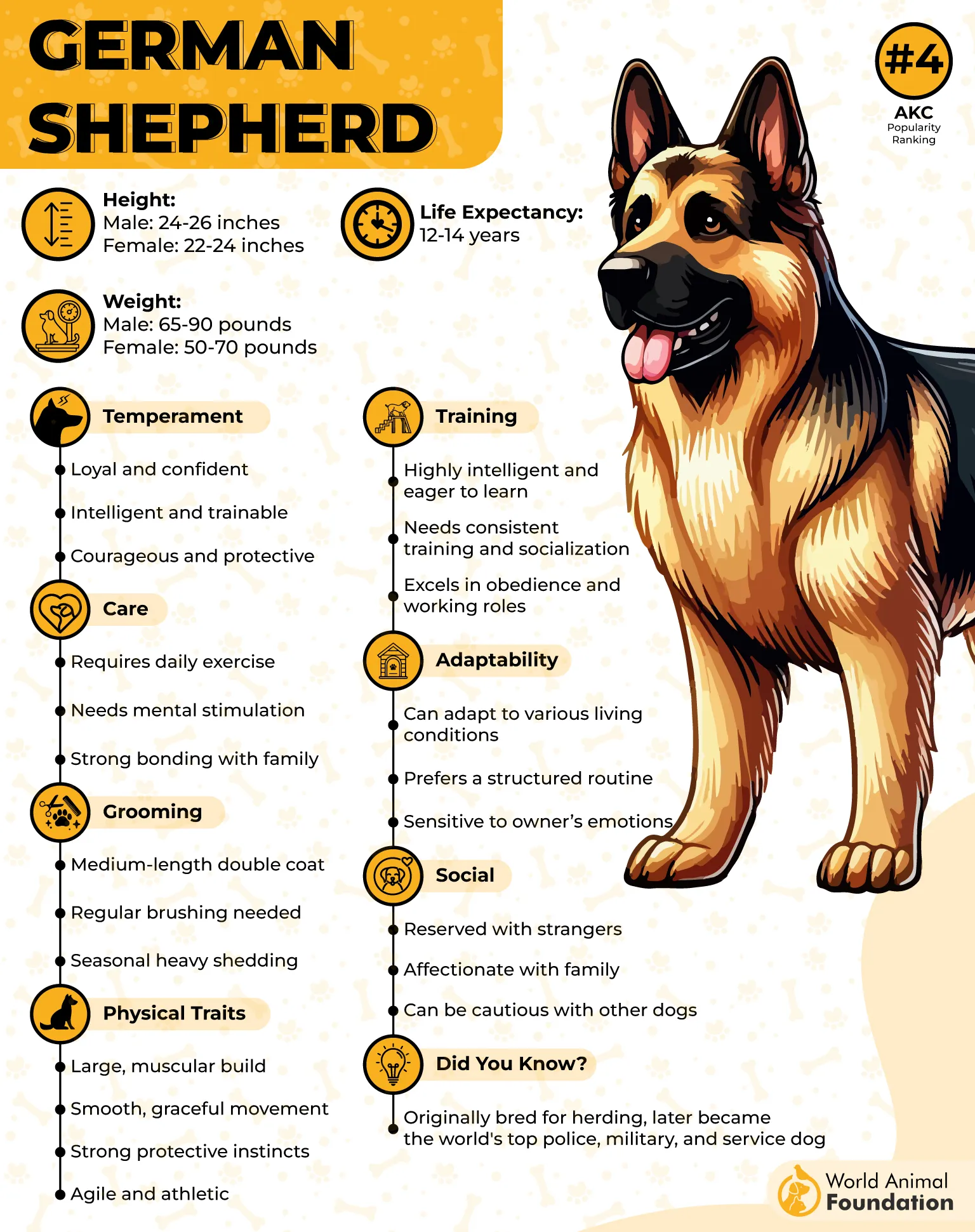
Exercise is a non-negotiable part of their routine. They require physical and mental stimulation daily, whether through agility training, running, or interactive play sessions. A well-exercised German Shepherd is far more likely to behave calmly around other dogs.
Maintaining their coat is relatively simple compared to heavy shedders. However, they do have seasonal shedding periods that require regular brushing. Their weather-resistant double coat allows them to stay comfortable in various climates.
Fun Fact
German Shepherds are often chosen as service dogs due to their high intelligence and adaptability. They have been trained for roles in search-and-rescue, military, and police work, proving their versatility beyond just being household protectors.
6. Bouvier des Flandres
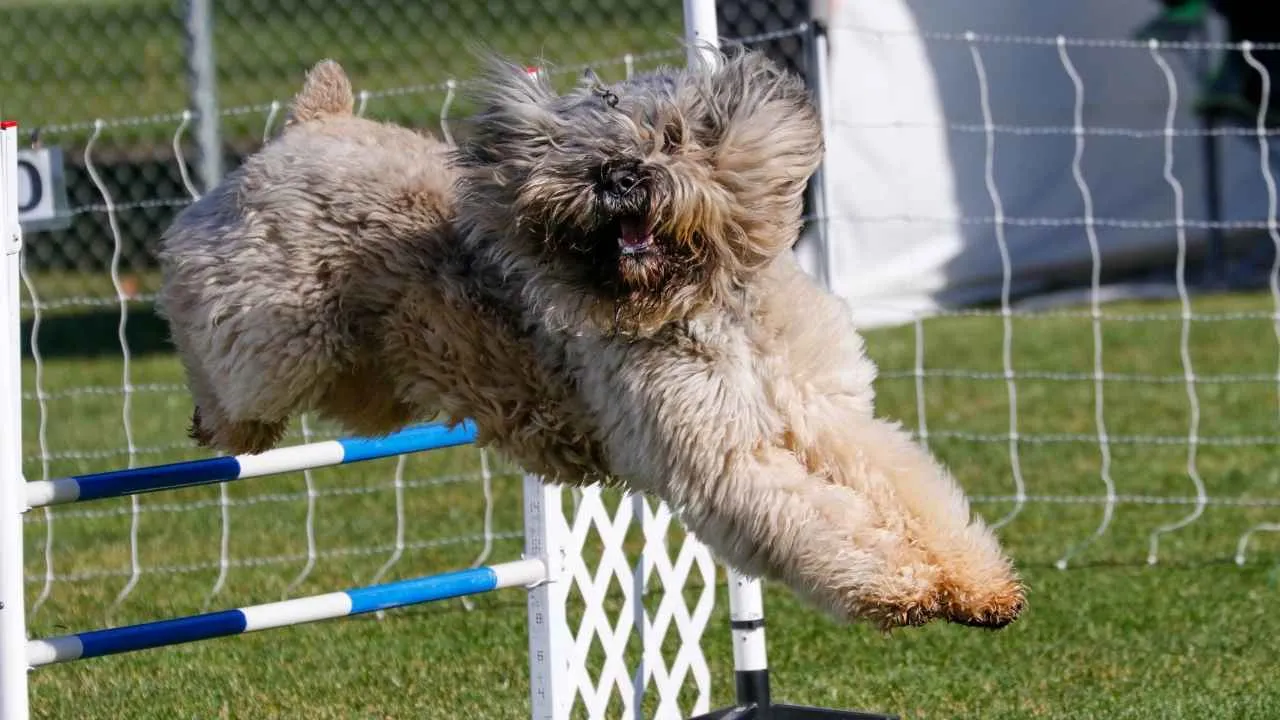
The Bouvier des Flandres is a robust and fearless working dog that carries itself with dignity. Surprisingly, beneath their imposing build lies a patient and well-balanced temperament, making them capable of coexisting with other dogs when properly managed.
Historically used for cattle herding, this breed developed a strong sense of teamwork. This background allows them to work alongside other dogs efficiently, provided they are introduced to social settings early in life.
A structured lifestyle is crucial for a Bouvier. They respond well to firm but fair training, thriving under leadership that sets clear boundaries. Socialization should be consistent to prevent them from becoming overly reserved or aloof toward unfamiliar dogs.
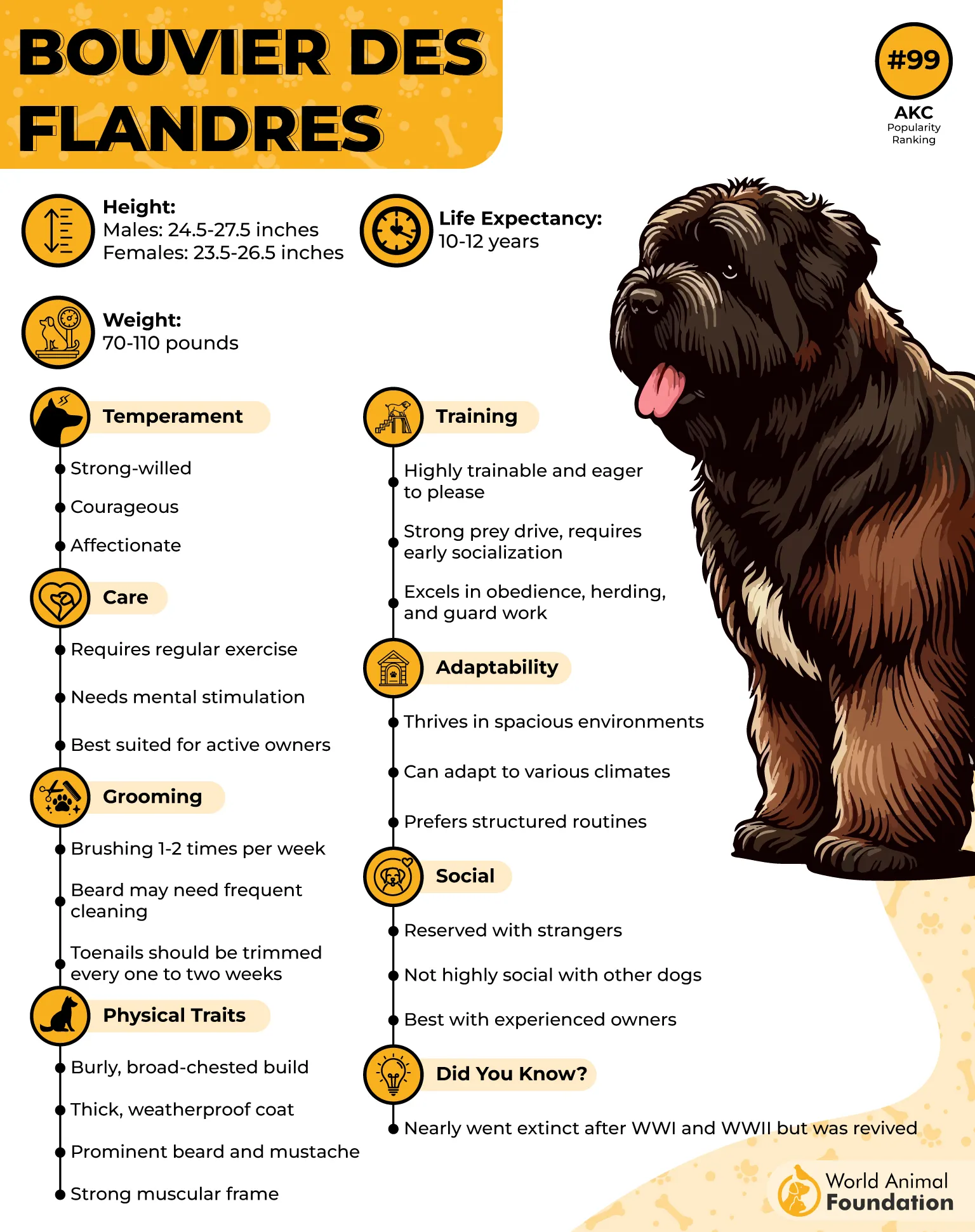
Their coat requires dedicated grooming. The dense, rough texture is protective against harsh weather, but regular brushing and occasional trimming prevent tangles. Bathing should be minimal to preserve the natural oils that keep their fur healthy.
Bouviers need ample space to move. While not excessively energetic, they appreciate having room to roam. Outdoor activities like herding exercises or long walks in open areas suit their working dog instincts while allowing social interactions with other canines.
Fun Fact
During World War I, the Bouvier des Flandres served as a messenger and ambulance dog. Their courage and intelligence made them invaluable in battlefield conditions, cementing their reputation as a breed capable of handling intense situations.
7. Cane Corso

The Cane Corso is an ancient guardian breed known for its imposing presence and unwavering loyalty. While they are naturally protective, they can also develop respectful relationships with other dogs when raised with proper guidance and clear leadership.
Originating from Italy, they were traditionally used as guard dogs and hunters. This background gives them strong instincts, making early socialization vital to shaping their interactions. With the right upbringing, they can live harmoniously with fellow canines.
Their intelligence and drive demand a structured training approach. Cane Corsos responds best to firm, confident owners who establish rules early. Consistent reinforcement helps them navigate social environments without feeling the need to dominate or challenge other dogs.

Physical activity is essential for this breed. They are muscular athletes requiring daily workouts to stay mentally and physically sharp. Controlled play sessions and structured tasks like weight pulling keep their instincts satisfied while fostering positive relationships with other dogs.
Their short coat is easy to maintain, but their health requires close attention. Cane Corsos can be prone to hip issues, so a high-quality diet, joint supplements, and regular vet checkups contribute to their long-term well-being.
Fun Fact
The Cane Corso’s history dates back to ancient Rome, where they were used in battle and for guarding estates. Their name translates to “guardian dog,” highlighting their long-standing role as formidable yet trainable protectors.
Conclusion
Choosing a guard dog that also gets along with other dogs creates a balanced and secure environment. The right breed provides protection without unnecessary tension, making daily life easier and more enjoyable for everyone. With proper training, even the most formidable breeds, such as police dogs and war dogs, can be both highly alert and socially adaptable, exemplifying the traits of the most loyal dog breeds.
Strong guarding instincts don’t have to mean constant aggression. With proper basic obedience training and socialization, these breeds can coexist peacefully while staying dependable in their protective roles. They understand boundaries, respect their pack, and respond confidently when needed.
While not included in the list above, the Staffordshire Bull Terrier is known for its strength, confidence, and adaptability, making it a breed that excels in protection and compatibility with other dogs when properly trained.
Selecting a breed with both security and sociability in mind ensures a safe, stress-free home. These dogs provide the best of both worlds—great guard dogs who also welcome companionship.


